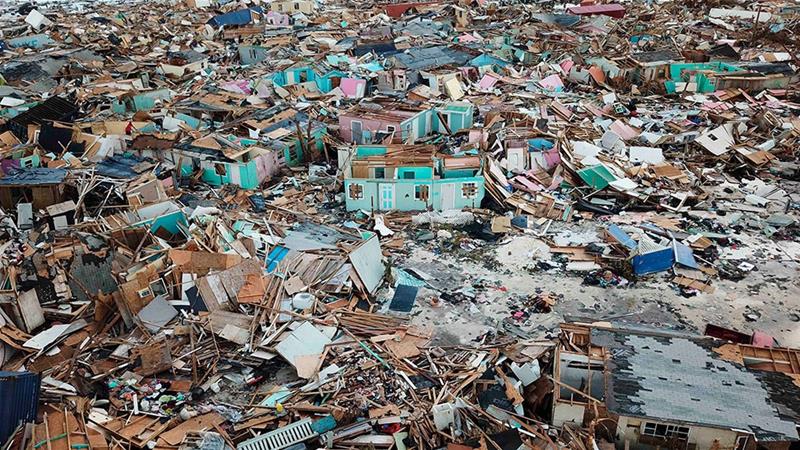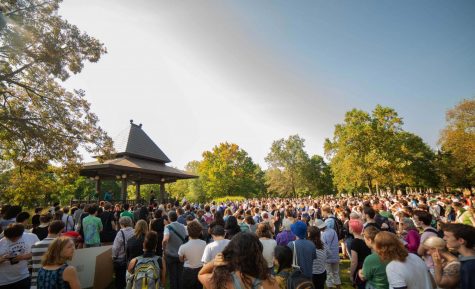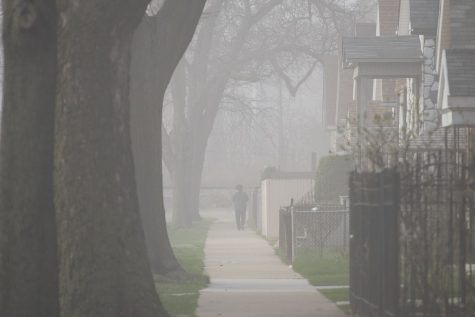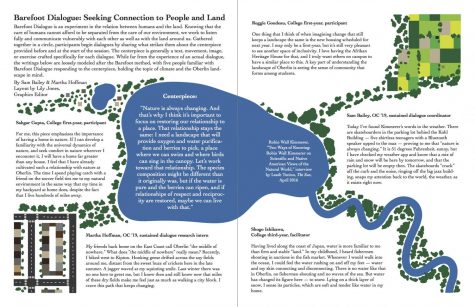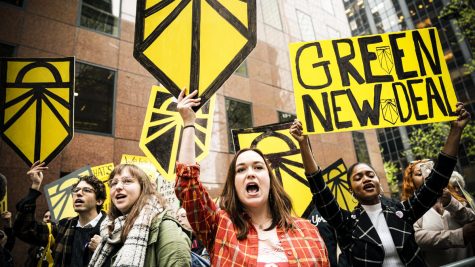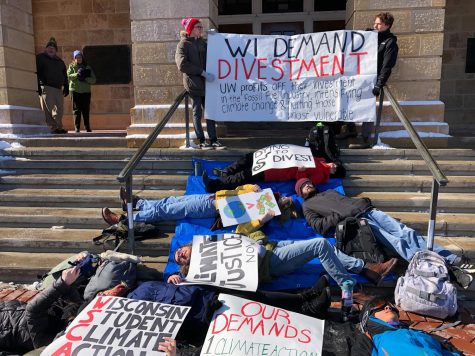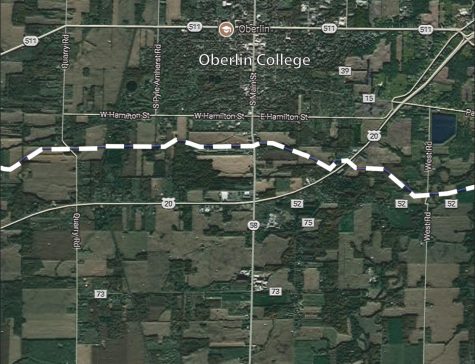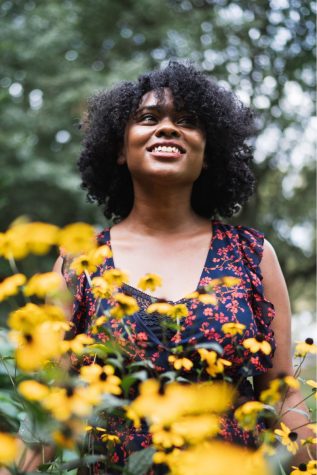Hurricane Dorian Reveals Deep Roots of Climate Injustice in Bahamas
In the Bahamas, Hurricane Dorian left significant destruction in its wake.
Officially, 70 lives were lost during Hurricane Dorian, the monster storm that hit the northern islands of the Bahamas in early September 2019. However, residents tell a different story; they claim that over 2,000 died. In February, I traveled across Abaco Island, which was hit particularly hard by Dorian. Months had passed since the hurricane, but still I saw more piles of debris — the wreckage of homes — than standing, livable structures. The winds had stripped the iconic Abaco pine trees of their leaves, save for a few tufts at their crowns. The saltwater that flooded the landscape had killed much of the other greenery. The island resembled a giant landfill, interspersed with long stretches of desolate forest. Boats — upturned, rusty, breached — littered the island, including one that was said to be the carrier of Haitian immigrants to the Bahamas. This boat ended up crashing through the undocumented community of the Mudd, which housed a predominantly Haitian population.
Dorian was a Category 5 hurricane. It battered the islands of Grand Bahama and Abaco for over 24 hours. Gusts of wind, with speeds reaching up to 185 miles-per-hour, swept across the islands, bringing roofs, trees, and whole houses to the ground. Twenty feet of coastal flooding carried boats from their moorings into the center of the island. Storms like this one — slow-moving, essentially stagnating over the areas they hit — can affect the Bahamian society and economy in unexpected ways.
As tourism makes up a significant portion of the national economy, and the bulk of the country’s goods are imported, most Bahamians find work in the tourism sector. Four hundred thousand Bahamians provide services and shelter for the millions of tourists that visit the Bahamas at any point during the year. From an early age, Bahamians learn about the features of the tourist economy in which they live. The message taught in school and embedded in the popular consciousness is that they are to be friendly and subservient to the rich, usually white tourists, upon whom their economy relies.
Dorian’s destruction of Abaco displaced many, but its effects were disproportionately felt by the Haitian-Bahamian community. Haitians have emigrated from their nation to the Bahamas for centuries, but in the last 60 years this influx has increased. The 2010 earthquake that ravaged Haiti’s infrastructure marked an increase in Haitian immigration to the Bahamas. These travelers often see the Bahamas as a stepping-stone on their journey to the United States. However, their dreams are dashed when they find that entering the United States is more difficult than they had anticipated.
Because of the Bahamas’ restrictive citizenship and immigration laws, many of the Haitians in the country are forced to work in positions of menial labor — landscaping, maintenance, and general cleaning — for the resorts that rise up over the islands’ coasts. Those with work permits sometimes find better jobs, or at least work that they are reliably paid for. About 60 percent of these Haitians in the Bahamas live below the poverty line. They have come to occupy the underclass in the Bahamian tourist economy.
Mainstream Bahamian society is often skeptical about the role Haitians play in their economy. Some say that Haitians usurp jobs from “true” Bahamians. Others describe Haitians as undesirable people; when I spoke to Haitian people on my trip, they recollected instances of being called dirty and criminal. In conversations with reporter Ava Turnquest and political economist Keisha Ellis, who are both from the Bahamas, they explained that Bahamians tend to blame Haitians for Haiti’s political crises, and attributed the Bahama-Haitian conflict to the country’s successful slave revolt of the 1780s. In the public mind, according to Turnquest and Ellis, Haitians fought against their colonizers and are now paying the price for it. The Bahamas, in contrast, merely moved from being a British colony to an independent nation in thrall to the U.S. — essentially a U.S. colony in less explicit terms.
Local human rights activists also told me about how the Bahamian government has previously attempted to rid Abaco Island of its Haitian neighborhoods, pejoratively known as shanty towns. Haitian neighborhoods such as the Mudd and the Peas on Abaco Island arose as halfway-housing for farmworkers. But the government’s threats to raze them repeatedly fell through, human rights activists say, because the residents hold squatters’ rights — the right to stay in an unoccupied space, over the land on which they have lived for almost 30 years.
The Mudd and the Peas were neighborhoods destroyed in the hurricane. But while the relief effort on the island has been slow-going, the cleanup of these communities came about very quickly. The once-bustling neighborhoods of the Mudd and the Pidgeon Peas have been cleared to make way for a fenced-off, empty lot. Tractors and trailers, some of the only ones in action on the island, work to clear the space so that the Haitian people have no chance to come back. It seemed as if the hurricane provided a perfect opportunity for the government’s threats to come to fruition.
Today, the Haitian survivors of Hurricane Dorian in those regions live in shelters and tents, many of them overcrowded. I saw 60–70 people sleeping in a single, small church with one bathroom among them. Non-governmental organizations provide their food and water. Their days are spent in fear. They have no mobility. Immigration raids have become more frequent and more intense. Those who are undocumented and found are swiftly deported. Those who have permits are beaten and have their possessions stolen. These conditions only have more severe public health implications as the COVID-19 pandemic continues to impact public life around the world. Indeed, there have been multiple deaths in the Bahamas and much of the Caribbean because of the virus.
Many Haitians are breaking their backs maintaining the castles of the rich, which tower above the rest of the island. Their access to the natural beauty of the Bahamas, their home, comes only through their work at the resorts that dominate the shores. They live in constant fear, as their safety, livelihoods, and the homes they live in are not guaranteed. This insecurity has been severely compounded by the climate disaster of Dorian, although its roots, and the roots of climate injustice, are far deeper.


